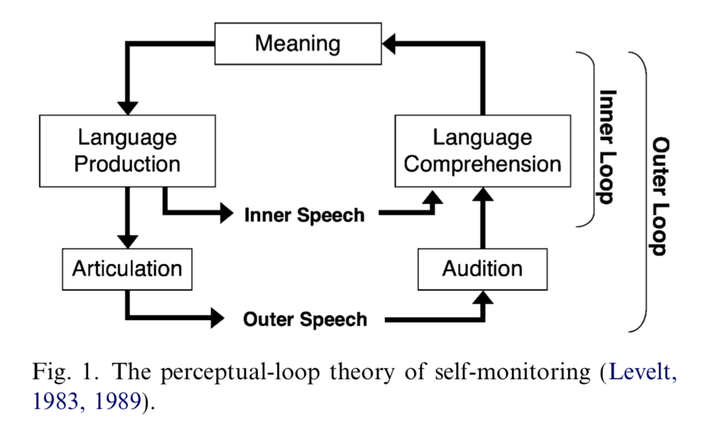Halting in single word production: A test of the perceptual loop theory of speech monitoring

Abstract
The perceptual loop theory of speech monitoring (Levelt, 1983) claims that inner and overt speech are monitored by the comprehension system, which detects errors by comparing the comprehension of formulated utterances to originally intended utterances. To test the perceptual loop monitor, speakers named pictures and sometimes attempted to halt speech in response to auditory (Experiments 1 and 3) or visual (Experiments 2, 4, and 5) words that differed from the picture name. These stop-signal words were varied in terms of their semantic or phonological similarity to the intended word. The ability to halt word production was sensitive to phonological similarity and, in Experiment 5, to emotional valence, but not to semantic similarity. These results suggest that the perceptual loop detects errors by making comparisons at a level where phonological knowledge is represented. These data also imply that dialogue, back channeling, and other areas where speech production is affected by simultaneous comprehension may operate based on phonological comparisons.